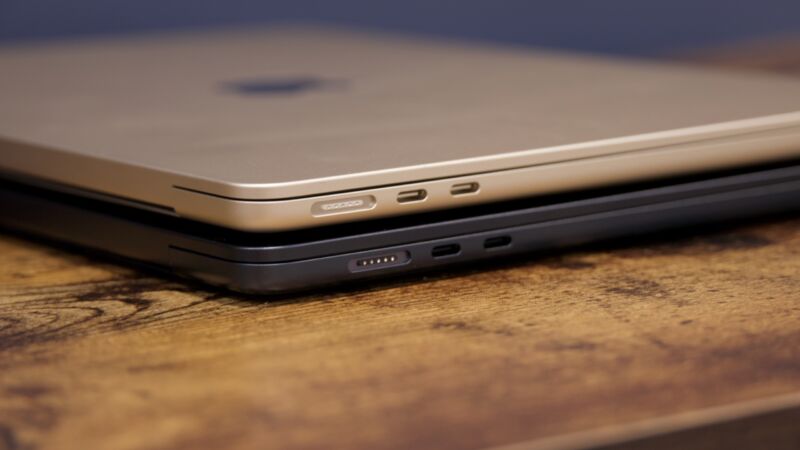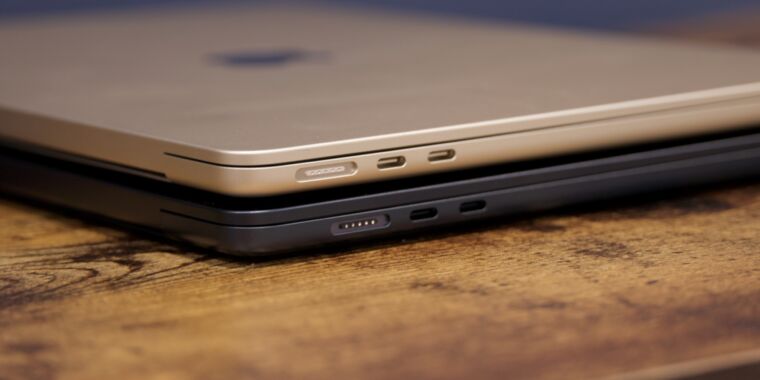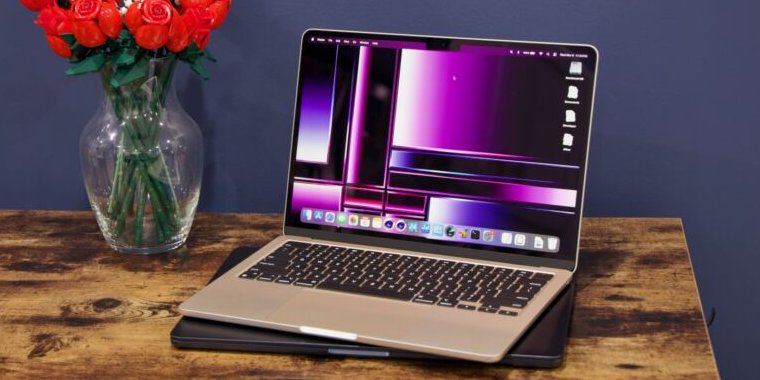M3 MacBook Air refresh boosts storage speeds for 256GB models
in a flash —
For the M2 Air, getting better storage speeds required a 512GB (or larger) SSD.

Enlarge / The 13- and 15-inch M3 MacBook Air.
Andrew Cunningham
When Apple upgraded its Macs with the M2 chip, some users noticed that storage speeds were actually quite a bit lower than they were in the M1 versions. Both the 256GB M2 MacBook Air and the 512GB M2 MacBook Pro had their storage speeds roughly halved compared to M1 Macs with the same storage capacities.
Teardowns revealed that this was because Apple was using fewer physical flash memory chips to provide the same amount of storage. Modern SSDs achieve their high speeds partly by reading from and writing to multiple NAND flash chips simultaneously, a process called “interleaving.” When there’s only one flash chip to access, speeds go down.
Early teardowns of the M3 MacBook Air suggest that Apple may have reversed course here, at least for some Airs. The Max Tech YouTube channel took a 256GB M3 Air apart, showing a pair of 128GB NAND flash chips rather than the single 256GB chip that the M2 Air used. BlackMagic Disk Speed Test performance increases accordingly; read and write speeds for the 256GB M2 Air come in at around 1,600 MB/s, while the M3 Air has read speeds of roughly 2,900 MB/s and write speeds of about 2,100 MB/s. That’s roughly in line with the M1 Air’s performance.
For the other M3 MacBook Airs, storage speed should be mostly comparable to the M2 versions. Apple sent us the 512GB configuration of the 13- and 15-inch M3 Airs, and storage speeds in the BlackMagic Disk Speed Test were roughly the same as for the 512GB M2 Airs—roughly 3,000 MB/s for both reading and writing.
Though this appears to be good news for M3 Air buyers, it doesn’t guarantee that any given 256GB MacBook Air will come configured this way. Apple uses multiple suppliers for many of the components in its devices, and the company could ship a mix of 128GB and 256GB chips in different 256GB MacBook Airs based on which components are cheaper or more readily available at any given time. (The Max Tech channel speculates that a single 128GB NAND chip costs Apple more than a single 256GB NAND chip, though Max Tech doesn’t cite a source for this, and we just don’t know what prices Apple negotiates with its suppliers for these components.)
Though it’s nice that the M3 Air’s baseline storage speeds are increasing, it’s too bad that a new Air is still offering the same storage speed as the M1 Airs released over three years ago. It’s frustrating that Apple can’t improve storage speeds along with CPU and GPU performance, especially when the standard M.2 SSDs in PCs are getting faster and cost less money than what Apple sells in its Mac lineup.
M3 MacBook Air refresh boosts storage speeds for 256GB models Read More »


